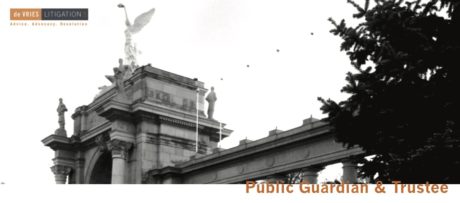While a will offers a way to ensure your assets pass to your chosen beneficiaries on death, not everyone dies with a will. When this happens, the Succession Law Reform Act (Part II) sets out who are the beneficiaries of the estate, while the Estates Act (section 29) ranks in order of priority who may apply to be estate trustee. This statutory system brings order and certainty to the process – unless no one wishes to step into the role of estate trustee. When that happens, the beneficiaries are left wondering – how will they get their money? More often than not, the same question is asked by the creditors of an estate – if no one is appointed as estate trustee, how are the creditors able to recover their debts?
It is the job of the estate trustee to liquidate and consolidate the deceased’s assets, ascertain and pay off all debts, and distribute the residue to the beneficiaries. It is also the job of the estate trustee to respond to any lawsuits – unlike corporations, estates are not legal entities. With limited exceptions, any lawsuit to recover a debt or enforce an obligation must name the estate trustee as the responding party. Without an estate trustee, the assets of the estate may remain illiquid and inaccessible and creditors may be unable to enforce any judgment debts.
Often seen as an option of last resort, the Public Guardian and Trustee (“PGT”) may be asked to step in to act as estate trustee. The Public Guardian and Trustee has the statutory authority to act as an estate trustee (section 1 of the Crown Administration Act). However, because the job of an estate trustee is often onerous, time consuming, and may even expose the estate trustee to personal liability, the legislature does not impose an obligation on any person to take on that role. This includes the Public Guardian and Trustee.
The requirement to consent to the appointment of estate trustee was recently confirmed in Potrzebowski v Potrzebowski. In that case, the deceased had died intestate. His wife and his adult daughters from a prior marriage were in litigation. Given the conflict between them, the court held that it was not appropriate that any of them be appointed estate trustee as it would only lead to an “escalation of conflict among them.” The parties agreed and, without giving notice to the Office of the Public Guardian and Trustee (“OPGT”), they obtained a court order appointing the Public Guardian and Trustee as estate trustee during litigation on a temporary basis (namely, to complete the sale of the deceased’s house, liquidate his other assets, and to resolve the pressing issue of whether the deceased was to be cremated or buried). The OPGT brought a motion to set aside the court order.
The OPGT directed the Court’s attention to sub-section 7(1.1) of the Public Guardian and Trustee Act which directs that the Public Guardian and Trustee shall not be appointed as estate trustee without his or her consent in writing. The OPGT confirmed that no consent had been given and that, in fact, the appointment was opposed.
While the Court held that it would have been “desirable” for the Public Guardian and Trustee to consent to the appointment, it held that the Public Guardian and Trustee was under no statutory obligation to accept. As a result, the Court set aside the order appointing the Public Guardian and Trustee as estate trustee and appointed a willing volunteer in his place.
For more information on when the Public Guardian and Trustee is likely to consent to act as estate trustee and what services it provides, the OPGT has published a helpful pamphlet.

